Mine closure overview
Mine Closure Hub

In brief
- Mine closure is the process of planning and managing the decommissioning of a mine, mitigating impacts, undertaking environmental rehabilitation and relinquishing the leases.
- Mine closure has a significant impact on people.
- The social costs of mine closure deal with the health and well-being of people and the level of dependence communities have on mining.
“The excitement and fanfare that surrounds the opening of a new mine is never present when it finally closes."1
Mine closure is a formal process of planning and managing the decommissioning of a mine site, mitigating impacts and legacy issues, undertaking environmental rehabilitation and, eventually, relinquishing the leases.2 It’s both a process and a discrete event in the mining lifecycle. A mine has a finite lifespan. When the mineral resources are exhausted or they become uneconomic to extract, the mine will stop operating and close. Mine closure is the stage of the mining lifecycle where this happens (see illustration below).
Mining lifecycle
Mine closure life cycle: exploration, planning, construction, mine operations, closure and post closure. Illustrations by Darren Sprott, Design Solutions Australia Pty Ltd.
Mine closure life cycle: exploration, planning, construction, mine operations, closure and post closure. Illustrations by Darren Sprott, Design Solutions Australia Pty Ltd.
The life-of-mine, or the time a mine is planned to continue operating, is defined by the size and the quality of the minerals in the ground. Ideally, mine closure would take place when the mineral resources have been exhausted, a mine closure plan has been developed and the plan is progressively implemented. In addition, all stakeholders would have been informed, have had the opportunity to participate in the closure planning process and would be prepared for the intended closure date.3
Unfortunately, things don’t always go to plan. Mines can close unexpectedly due to a drop in mineral prices, changes in government requirements, geological and technical issues, social/community pressures or environmental disasters (e.g., flooding or earthquakes).3 In some cases, closure may be temporary, leading to a program of care and maintenance, where the mine infrastructure is maintained intact waiting for mining to restart.4 There are very few people employed on site during a program of care and maintenance.
You can learn more about mine closure planning in the section on mine closure processes and responsibilities available from the table of contents at the top of this page.
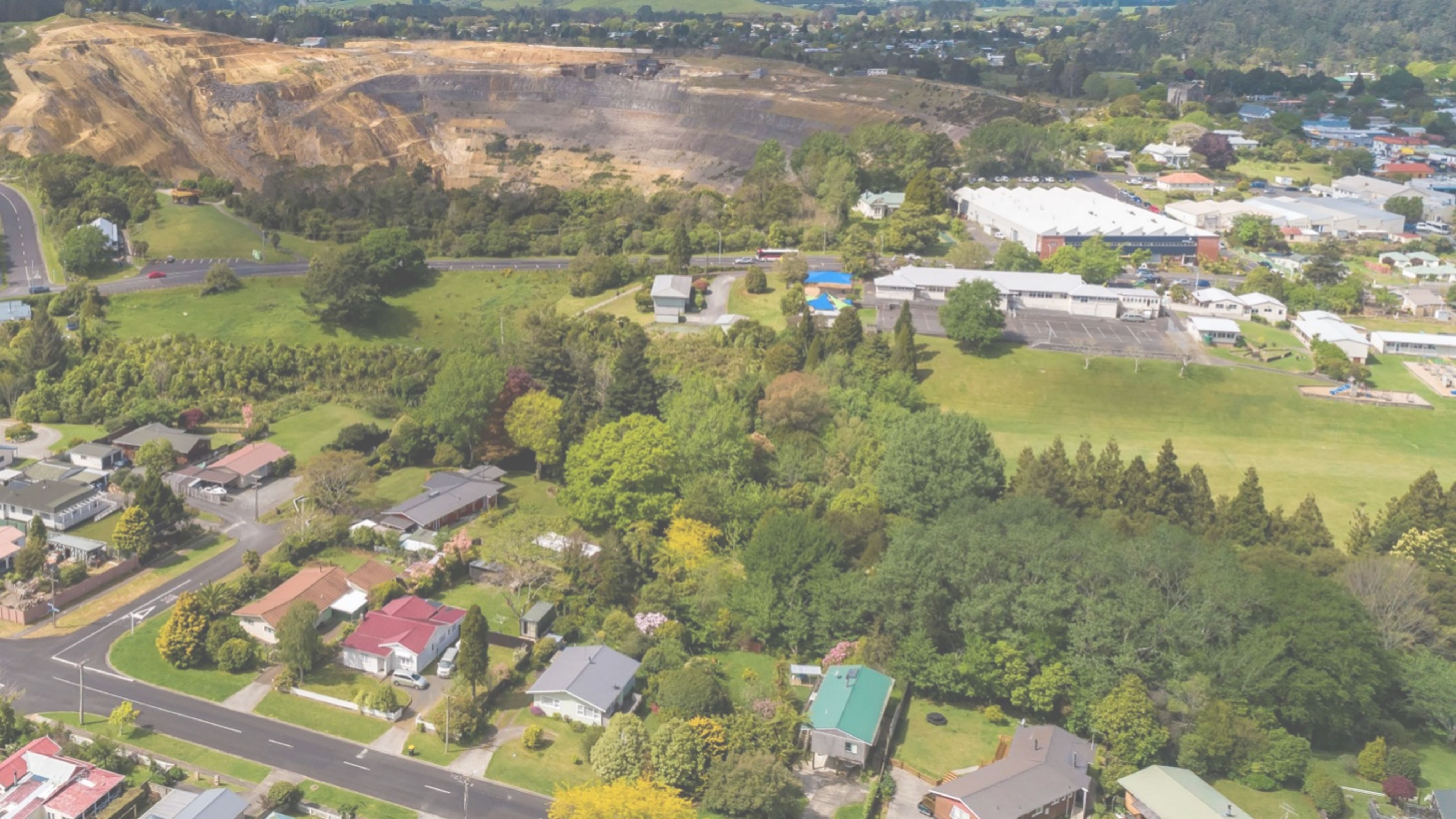
In the following video, you’ll hear what mine closure means to eight people. They represent different stakeholder groups and they come from different cultures and countries around the world.
Download the transcript here.
As you just heard, the way stakeholders think about mine closure varies depending on their experiences and their set of circumstances.
Social aspects of mine closure
In our work at CSRM, we’ve noticed that when mining companies and government agencies talk about mine closure, their focus is generally on physical and environmental issues, such as mined land rehabilitation, mine water management, soil replacement, groundcover monitoring, vegetation management, post-mining land use and biophysical removal of the mining infrastructure.5
In 2018, we highlighted that the social dimensions of mine closure were not being given sufficient attention by mining companies. We also noted that the existing standards, guidelines, regulations, knowledge and tools to manage the social aspects were at an early stage of development and implementation.
Greater attention is now being given to integrating social, economic and environmental factors into mine closure planning. For example, the International Council on Mining and Metals (ICMM), a global organisation representing 27 mining and metals companies and 35 industry associations, has published the Integrated Mine Closure: Good practice guide (2nd edition)6. For ICMM, integrated mine closure is:
“a dynamic and iterative process that takes into account environmental, social and economic considerations at an early stage of mine development”.6
Mine closure involves more than just the removal of a processing plant and a site’s physical rehabilitation. As social development specialist Minerva Chaloping-March says:
“[it’s] a social episode in the lives of individuals, households, families, communities and local governments.”7
Because mine closure has such a significant impact on people, the social aspects of mine closure are an important dimension of mine closure planning.
So, what do we mean by the term ‘social aspects of mine closure’? Generally speaking, the social aspects relate to:
- the socio-economic, political, cultural, human well-being and institutional impacts that emerge when mining activities end – for example, outward migration of people, reduction in social services, changes in the local economy, indigenous people’s connection to mined land
- how impacts are addressed, and the planning and management processes needed for that assessment – for example, workforce planning, assessment of housing demand, scenario planning, socio-economic studies
- an emphasis on long-term sustainability beyond the life of active operations.8
The social costs of mine closure deal with the health and well-being of people. Many of these costs are linked to environmental changes. For land-connected peoples, including Indigenous peoples, for example, these costs include impacts to identity, cultural and spiritual connections, and their inherent obligations to look after Country. Other costs are associated with communities’ dependence on mines for their economic base, infrastructure and service provision.
Illustrations by Darren Sprott, Design Solutions Australia Pty Ltd.
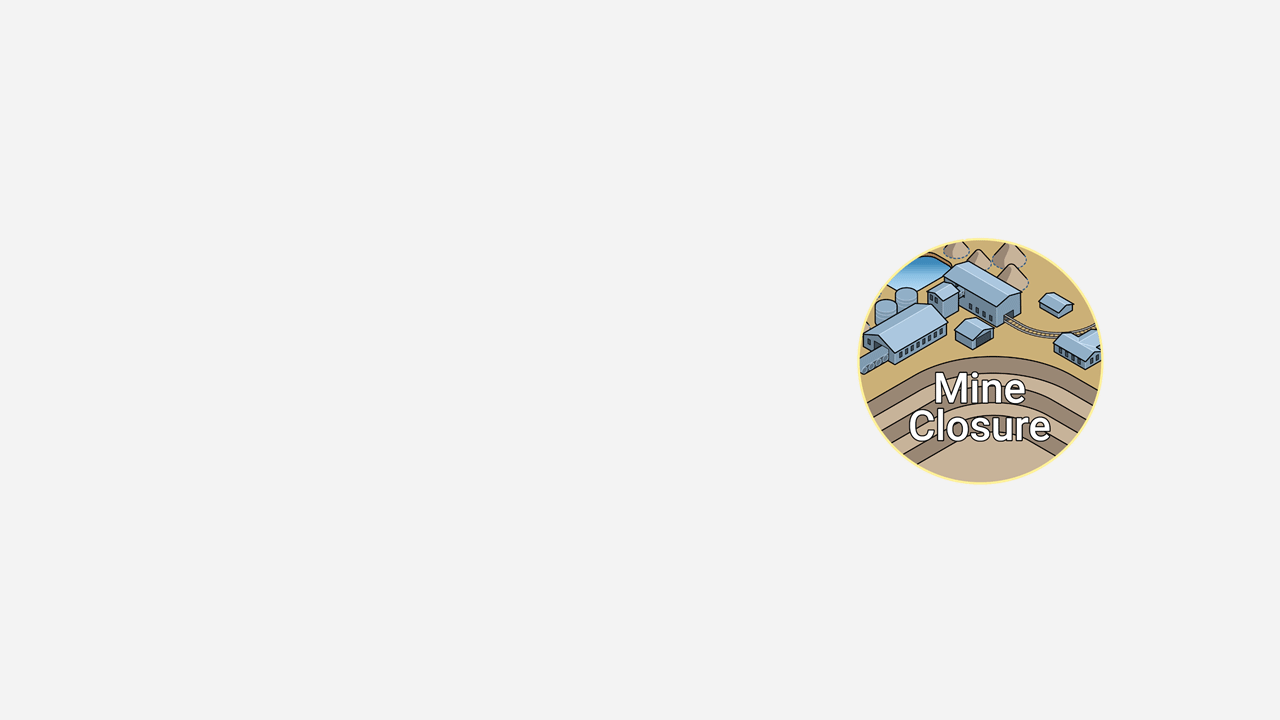

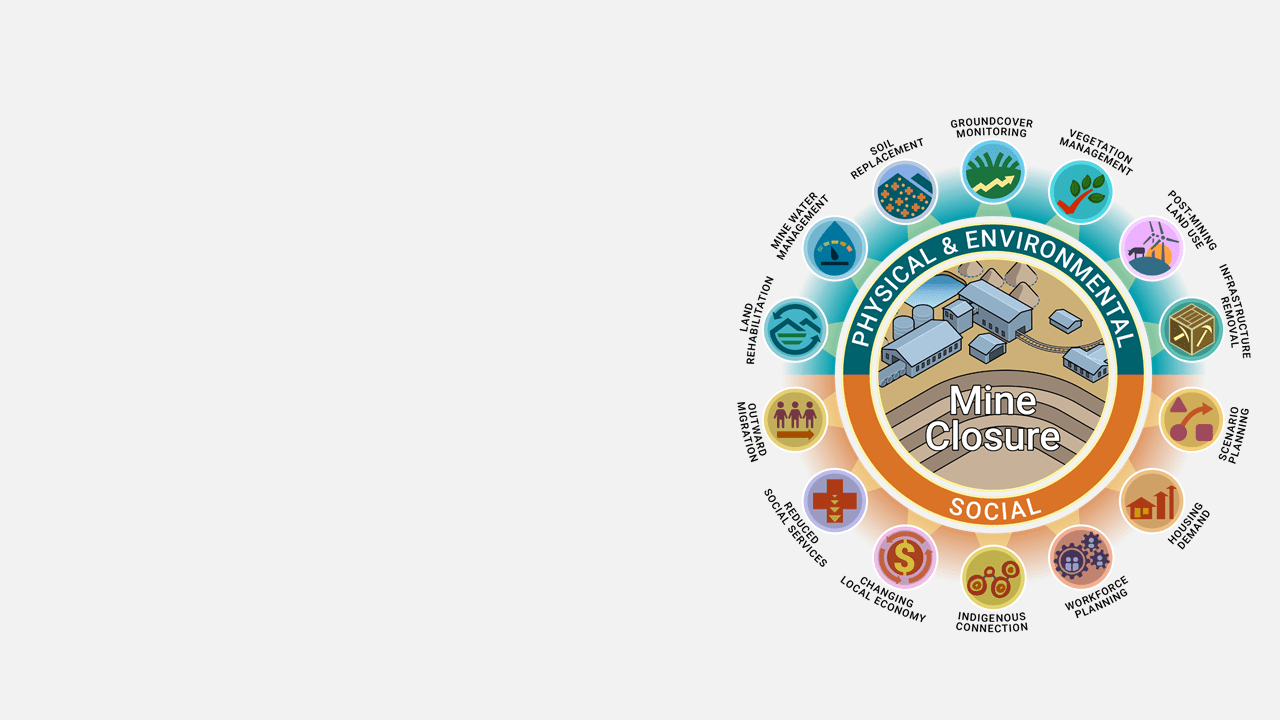
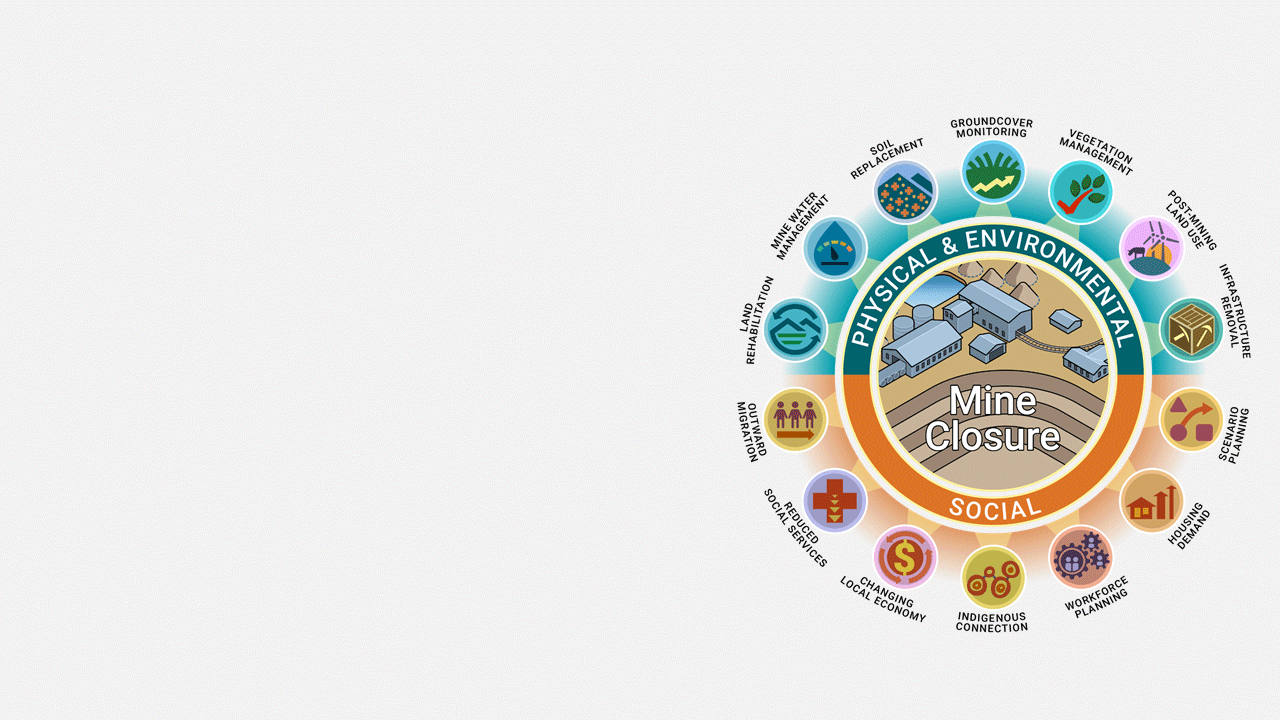
Social aspects of mine closure
In our work at CSRM, we’ve noticed that when mining companies and government agencies talk about mine closure, their focus is generally on physical and environmental issues, such as mined land rehabilitation, mine water management, soil replacement, groundcover monitoring, vegetation management, post-mining land use and biophysical removal of the mining infrastructure.5
In 2018, we highlighted that the social dimensions of mine closure were not being given sufficient attention by mining companies. We also noted that the existing standards, guidelines, regulations, knowledge and tools to manage the social aspects were at an early stage of development and implementation.
Greater attention is now being given to integrating social, economic and environmental factors into mine closure planning. For example, the International Council on Mining and Metals (ICMM), a global organisation representing 27 mining and metals companies and 35 industry associations, has published the Integrated Mine Closure: Good practice guide (2nd edition)6. For ICMM, integrated mine closure is:
“a dynamic and iterative process that takes into account environmental, social and economic considerations at an early stage of mine development”.6
Mine closure involves more than just the removal of a processing plant and a site’s physical rehabilitation. As social development specialist Minerva Chaloping-March says:
“[it’s] a social episode in the lives of individuals, households, families, communities and local governments.”7
Because mine closure has such a significant impact on people, the social aspects of mine closure are an important dimension of mine closure planning.
So, what do we mean by the term ‘social aspects of mine closure’? Generally speaking, the social aspects relate to:
- the socio-economic, political, cultural, human well-being and institutional impacts that emerge when mining activities end – for example, outward migration of people, reduction in social services, changes in the local economy, indigenous people’s connection to mined land
- how impacts are addressed, and the planning and management processes needed for that assessment – for example, workforce planning, assessment of housing demand, scenario planning, socio-economic studies
- an emphasis on long-term sustainability beyond the life of active operations.8
The social costs of mine closure deal with the health and well-being of people. Many of these costs are linked to environmental changes. For land-connected peoples, including Indigenous peoples, for example, these costs include impacts to identity, cultural and spiritual connections, and their inherent obligations to look after Country. Other costs are associated with communities’ dependence on mines for their economic base, infrastructure and service provision.
Social aspects of mine closure diagram. Illustrations by Darren Sprott, Design Solutions Australia Pty Ltd.
Social aspects of mine closure diagram. Illustrations by Darren Sprott, Design Solutions Australia Pty Ltd.
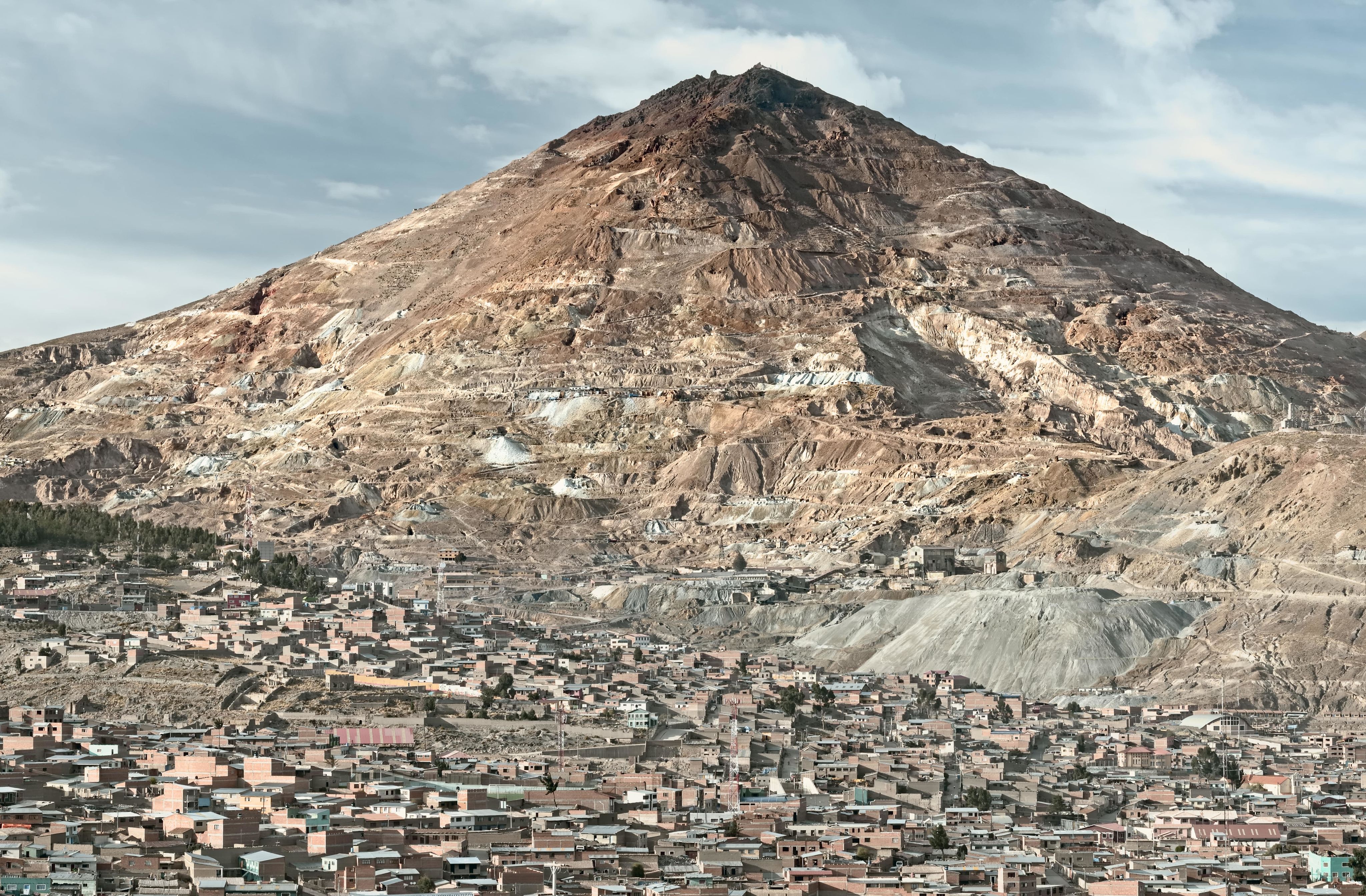
Mine closure challenges
Mine closure is a complex and resource-intensive process that’s carried out over an extended period of time. Because of this complexity, one of the key challenges facing companies, regulatory authorities and communities is understanding the actual cost of mine closure. An associated challenge is ensuring sufficient funds are available to complete closure activities to a standard acceptable to the regulator and other stakeholders. If the mining company has not made provision for closure throughout the mining lifecycle, it could face financial constraints in the lead-up to closure due to declining revenue as mine production tapers off.
There are major technical and economic challenges in rehabilitating large-scale mines which have significantly modified the natural landscape. These challenges include stabilising landforms to prevent erosion, stopping contaminants (such as heavy metals and chemicals in mine waste) from entering local waterways, and re-establishing native ecosystems on rehabilitated land.
Social challenges include out-migration as direct and indirect mining jobs come to an end; open and transparent engagement between the company, the community and other stakeholders as key people leave; maintaining social cohesion as community dynamics change; local government’s capacity to continue providing services due to loss of revenue from mining companies; and loss of social services due to insufficient demand. Many communities and mining regions continue to lag socially and economically decades after mining has ceased. Others demonstrate greater resilience to closure and transition more smoothly and successfully.
Forward planning and multi-stakeholder participation in decision-making are critical for successful transition.9 A well-managed mine closure process can establish the basis for a sustainable post-mining future and create new opportunities, including for alternative industries and businesses, stronger livelihood and food security, acquisition of new labour skills, and reuse of mining infrastructure.
When the closure process is implemented from an early stage of the mining lifecycle, it has the potential to create the foundation for long-term development."10
Photo by olezzo, Adobe Stock.




